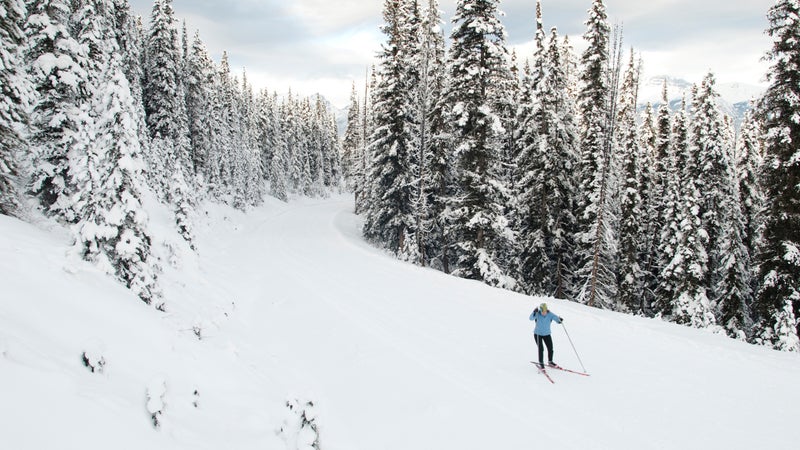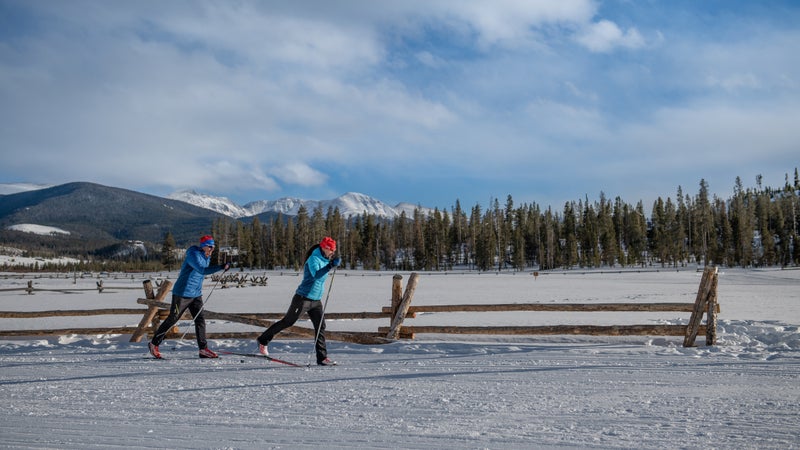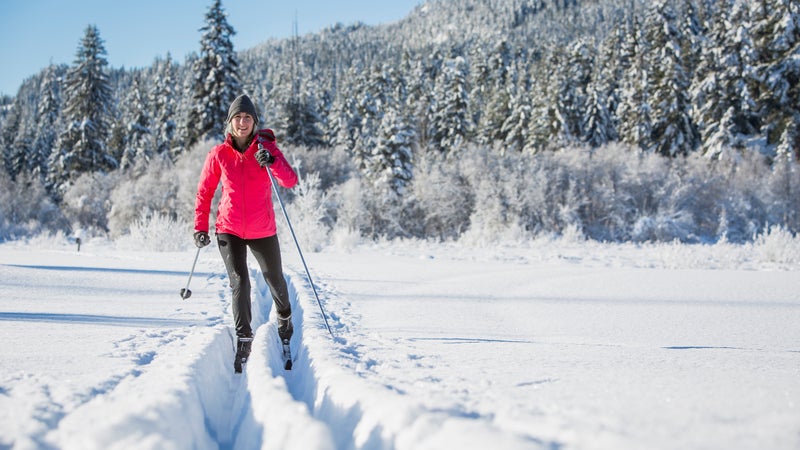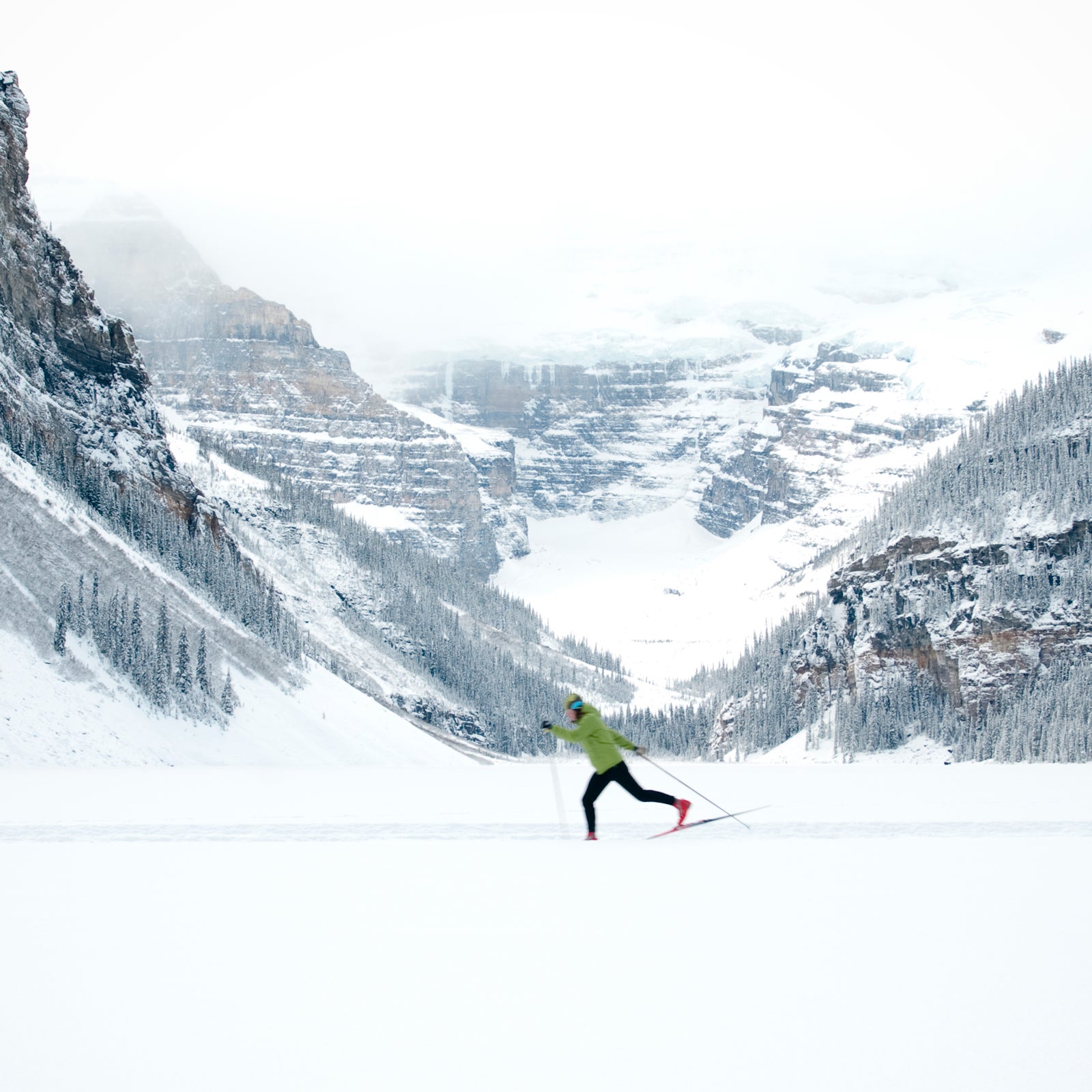As the darkness of a COVID winter looms, I plan on cross-country skiing my face off. ItÔÇÖs the perfect socially distant winter activity:╠řglide off into solitary oblivion without a chairlift in sight, while getting a kick-ass, gym-free workout. I wonÔÇÖt be the only one out there.
ÔÇťMany people are turning to nordic, especially if they donÔÇÖt live near a resort,ÔÇŁ says Nick Sargent, president of the industry organization╠ř. Whether travel or general safety╠řis your concern, cross-country skis afford beautiful independence.
ÔÇťNo matter what the situation isÔÇöpandemic, weather, holiday, with kids or withoutÔÇöwe can go nordic skiing,ÔÇŁ says Sargent, who grew up skiing two miles to school and back in Vermont. That ease of access is appealing.╠řShops across the country are ╠řthan in past years; in Colorado,╠ř╠řreports╠řseeing shortages from many manufacturers. This means now is the time to buy.
But cross-country ski gear is undeniably confusing. There are several different types of boots and skisÔÇöand different ways to ski themÔÇöplus a complex matrix of boot-binding compatibility. HereÔÇÖs our primer on how to become the nordie youÔÇÖve always wanted to be.
Use a Shop
Possibly more so than any other sport, there is massive value in working with a shop to get set up with proper skis, boots, bindings, and poles. (And many shops can help customers over the phone instead of in person, ideal in our COVID world.)
The first question will be: Do you want to ski in tracks at a nordic center or out of tracks in the backcountry? TheyÔÇÖll also ask what other sports you do, and what kind of experience youÔÇÖre looking to have.
Skate Skis

Skate skiing is exactly what it sounds like: each ski glides forward diagonally, similar to╠řwhat happens╠řice skating, every╠řstride starting with a push-off on the inside edge of the opposite ski. Anyone who likes to go fast off the bat, and who plans on skiing exclusively at groomed nordic centers, will likely gravitate toward this discipline. (Though the best way to decide whether you prefer skate or classic skiing is to rent equipment and try them both.) Skate skis have a base thatÔÇÖs smooth from tip to tail.
Nathan Schultz, the owner of Boulder Nordic Sport,╠řsuggests investing in at least , which cost anywhere from $300 to $500.╠řÔÇťItÔÇÖs way more fun to have high-quality stuff,ÔÇŁ he says. ÔÇťItÔÇÖs less work.ÔÇŁ Why? Higher-end base materials glide and hold wax better, and well-engineered foam or corrugated composite cores make skis lighter and livelier, moving your energy down the trail instead of absorbing it. ÔÇťInexpensive skis feel more dead and wooden,ÔÇŁ he says.
Classic Skis

Classic skiing is what you probably think of when you picture cross-country athletes: you move your skis forward in a parallel motion, like youÔÇÖre running on skis. This discipline can produce just as good of a workout as skate skiing, but itÔÇÖs typically a little slower╠řand requires more technique to unlock higher speeds. (Most beginners simply walk on skis. The true╠řkick-and-glide motion takes awhile to learn.) Classic skiing is also more versatile. You can go fast╠řin tracks at nordic centers╠řor cruise around off-trail in the woods. The skis look similar to skate models in every way, except theyÔÇÖre usually longer and the tips curve up more. They also have a grippy kick zone under the foot.
Classic skis come in several variations. require you to apply a temperature-specific, sticky ╠řto this section of the base, while have a fish-scale pattern underfoot that generates kick. In the past few years, have started embedding╠řmohair skins, like those used for alpine touring, into the bottom of classic skis, instead of grinding in a fish-scale pattern.╠ř(No matter which type of ski you pick, you should still apply glide wax to the tips and tails. More on that below.)
For high-performance classic skiing, to waxable skis (and a good wax application) will have you kicking and gliding the fastest. However,╠řSchultz says that╠ř meant for in-track skiing work well and ÔÇťremove one layer of confusion and complexity from an already technical sport.ÔÇŁ ThereÔÇÖs also a versatile category of that work both in tracks and off-trail.
Backcountry Skis

If you want to ski a wide range of off-trail terrain, youÔÇÖll need skis that are fatter, shorter, and have metal edges for stability and turning. Otherwise, the underfoot grip zone and the kick-and-glide forward motion are╠řthe same as they are╠řon classic skis. ÔÇťWe have a lot of people come to us╠řwanting to╠řshuffle around the lakes and forests of Minnesota and Wisconsin,ÔÇŁ says Jenny Beckman, general manager of the Minnesota╠řshop╠ř. ÔÇťTheyÔÇÖre looking for a classic-style setup with very little maintenance. We direct them to waxless skis in tracks and out.ÔÇŁ There are also burlier╠ř╠řare 60 millimeters (or even fatter) underfoot and can handle╠řlow-angle trails from New Hampshire to Montana. A╠řdedicated will keep your feet warm while offering higher levels of support for rugged terrain. This╠řtype of boot works only with a dedicated backcountry, or .
Boots and╠řBindings
have a stiff sole╠řand a high, supportive ankle cuff,╠řand they should fit snugly, like a cycling shoe, but not as tight as an alpine boot. A╠ř╠řis╠řcut lower, and its╠řsole and╠řankle are able to╠řflex as you kick and glide. For fit, allow╠řabout a thumbÔÇÖs width of room at╠řthe toe, like a running shoe. The same rule applies for both: A╠ř╠řboot, often made , will be lighter and stiffer, yielding better power transfer. It will also pack out less over time. If youÔÇÖre interested in both skate and classic skiing, you can get away with , which have a structural cuff for skating and a soft enough sole to flex for classicÔÇöadequate for both, though optimal for neither.
To a certain degree, the boot you buy will determine what kind of binding you need. (Or╠řvice versa:╠řif you particularly like a certain binding platform, that will limit your boot options.) Nordic boot-binding compatibility can lead you down a path of confusing acronyms. Most boots these days from brands like Alpina, Fischer, Madshus, Rossignol, and Salomon are on an NNN platform, with three NNN-compatible binding platformsÔÇöNIS, , and╠ř. Ultimately, itÔÇÖs best to ask a shop employee or a very knowledgeable friend to make sure your gear is copacetic. Skate and classic bindings systems bear the same acronyms. The main difference is that╠řclassic bindings╠řhave a softer toe bumper than a skate binding to allow more of a kick-and-glide movement.╠řA ╠řof classic binding╠řshifts up to three centimeters forward or backward. ÔÇťYou can shift the binding forward for extra kick╠řor back for extra glide,ÔÇŁ depending on the conditions, says Beckman.
Poles
Skate and classic skiing use╠řthe same poles, just cut to different lengths. Skate poles should arrive╠řbetween your upper lip and your nose when you rest the tip on the ground while wearing boots or street shoes; classic poles╠řshould reach the top of your shoulder while youÔÇÖre wearing boots. Zach Caldwell of VermontÔÇÖs and ╠řrecommends lightweight ╠řinstead of a carbon-fiber glass blend, so youÔÇÖre not swinging a heavy pendulum with every pole plant.╠řMake sure the grips and straps fit your hands and wrists properly. ÔÇťThatÔÇÖs where the power transfer happens,ÔÇŁ Caldwell says.
How Much Money Are We Talking?
in any cross-country discipline will cost you between $700 to $1,000, but you can get a package of boots, bindings, and waxless touring skis for $350. Compare that amount to even an entry-level bike and exhale.
Taking Care of Your Gear
Caldwell advises╠ř your ski bases at regular intervals╠řand then using every time you skiÔÇöeven the tips and tails of classic skis, no matter what kind of classic ski you have. This helps the skis glide and keeps the bases from drying out. Skipping the hot wax and just using liquids works fine,╠řhe says, but regular hot-wax applications will help the overall performance and life span╠řof your new skis.


